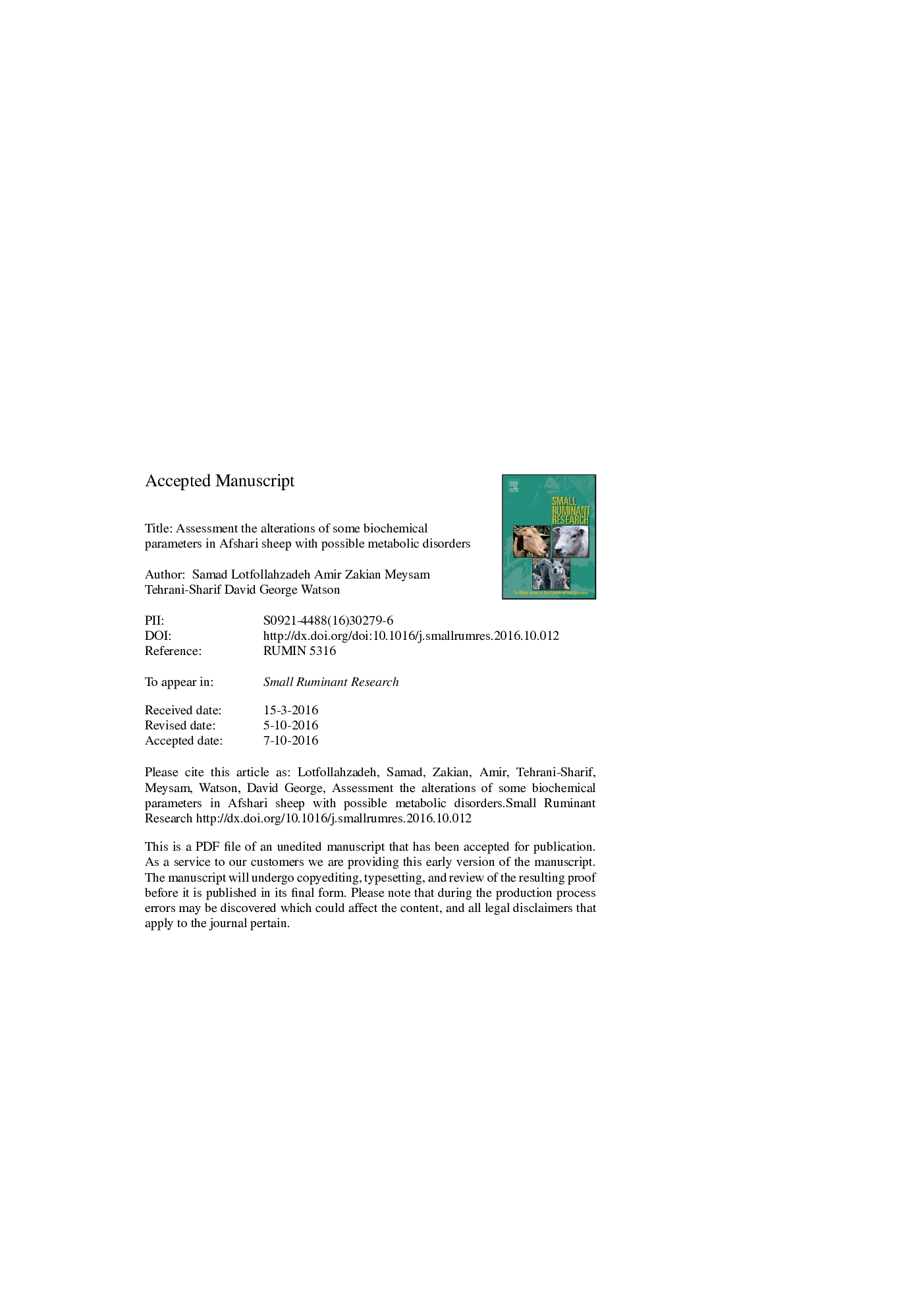| Article ID | Journal | Published Year | Pages | File Type |
|---|---|---|---|---|
| 5544323 | Small Ruminant Research | 2016 | 23 Pages |
Abstract
Clinical or subclinical ketosis is a very common metabolic disease in late-pregnancy in sheep, which causes severe economic losses to sheep flocks. Ovine pregnancy toxaemia (OPT), hypocalcaemia and hypomagnesemia together with decreased immune system function are some of the disorders which will occur following hyperketonemia in sheep. To evaluate common metabolic disorders in Afshari sheep, some serum biochemical parameters in late-pregnancy and non-pregnant Afshari sheep were measured. Blood samples were taken from 255 healthy pregnant sheep on their last 4- 6 weeks of pregnancy and in 122 healthy non-pregnant sheep as control group from 18 herds in Semnan, in the central part of Iran. Sera were isolated by centrifugation and kept in freezer until analysis. β-hydroxybutyrate (BHB), glucose, total antioxidant capacity (TAC), malondialdehyde-thiobarbituric acid reactive substances (MDA-TBARS), fibrinogen, total protein, albumin, urea, creatinine, aspartate aminotransferase (AST), alanine transaminase (ALT), triglycerides, cholesterol, total calcium, magnesium and inorganic phosphorus were measured in serum samples with commercial kits. Statistical analysis of the data showed that seventy pregnant ewes were in inadequate energy intake (IEI) and had subclinical OPT (BHB > 0.86 mmol/l) whereas 181 pregnant ewes were in good energy balance (BHB < 0.86 mmol/l). Serum concentrations of glucose (P < 0.01), calcium (P < 0.05), inorganic phosphorus (P < 0.05) and sodium (P < 0.05) were significantly lower in ewes with subclinical OPT as compared with ewes without OPT. Ewes with subclinical OPT had significantly higher serum concentrations of urea (P < 0.05), triglyceride (P < 0.05), cholesterol (P < 0.05), AST (P < 0.05), ALT (P < 0.05), TAC (P < 0.05) and TBARS (P < 0.05) in comparison with in ewes without OPT. Serum biochemical profile in ewes with IEI and pregnant with twins significantly differed from those in ewes without IEI and singleton pregnant. The results proved NEB, IEI, hypocalcaemia and oxidative stress in pregnant Afshari ewes especially in twin are current and expected, that must be managed and controlled to avoid potential economic losses in the sheep farming industry which plays a significant role in rural and nomadic livelihood.
Keywords
Related Topics
Life Sciences
Agricultural and Biological Sciences
Animal Science and Zoology
Authors
Samad Lotfollahzadeh, Amir Zakian, Meysam Tehrani-Sharif, David George Watson,
